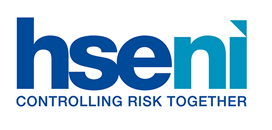What is welding fume?
Welding fume is produced when metals are heated above their melting point, vaporise and condense into fumes. The fume given off by welding contains a varying mixture of gases and very fine particles which if inhaled can cause ill health.
What are the health risks?
The health risks vary from acute (short-term) to chronic (long-term) effects. Acute effects include irritation to the respiratory system and metal fume fever. Chronic respiratory health effects can include more serious diseases including lung cancer, chronic obstructive pulmonary disease (COPD) and occupational asthma.
Are there any health risks when welding in a confined space?
Yes. Shielding gases pose a significant risk of asphyxiation caused by the accumulation of the gases in a confined space and/or displacement of oxygen.
Do I need local exhaust ventilation (LEV)?
LEV captures fume at source i.e. where the welding fume is being generated. If used properly LEV provides an effective level of control and should always be considered from the outset. In some cases LEV may not be appropriate e.g. when welding at height or outdoors. LEV options include extracted benches, on-tool extraction and moveable capture hoods. Removing welding fume at source will also help limit the amount of fume spreading to other work areas.
Is on-torch extraction effective at controlling welding fume?
On-torch extraction systems can be very effective assuming they are set up and used correctly. As welding fume rises it is important to ensure the extract nozzles on the welding torch are located above the area where welding is taking place to ensure effective capture. On-tool extraction may not always be effective in certain scenarios e.g. when welding overhead.
Can I use Respiratory Protective Equipment (RPE) as my only method of controlling exposure to welding fume?
To ensure adequate control of welding fume it is likely a combination of control measures will be required including LEV and RPE. In some cases it may not be practical to use LEV and under such circumstances employers may have to revert to RPE as the main method of controlling exposure. Consideration should also be given to other persons that may be exposed to welding fume.
What if I am welding outdoors?
LEV systems cannot be relied on to provide effective fume capture outdoors. For welding activities conducted outside, suitable RPE must be provided. Consideration should also be given to other persons in the area that may be exposed to welding fume.
Are LEV and RPE the only control measures I should consider?
No. Employers should always consider if it is possible to avoid the need for welding in the first instance. Whilst this may not always be possible, a range of other control measures should also be considered. Additional measures may include using less fume generating welding practices, minimising worker exposure by having a dedicated welding area and ensuring good levels of ventilation within the work area.
What if I only weld on an occasional basis and for short durations?
Some welding processes generate less fume than others e.g. TIG and resistance spot welding. Where the frequency and duration of such welding is limited, general ventilation may be sufficient to provide adequate control. Further guidance on welding fume control under these circumstances is available within COSHH Essentials guidance sheet WL3 - pdf format (www.hse.gov.uk)
How do I maintain my LEV system?
LEV systems should be maintained in line with the manufacturer's recommendations and any records of inspection and maintenance should be maintained. In addition every LEV system requires a statutory thorough examination and test by a competent person, at least every 14 months. This detailed and systematic examination helps ensure that the LEV can continue to perform as intended and provide adequate control. More information is available on HSENI LEV web page.
What type of RPE should I use?
There are many types of RPE available for use under different circumstances. For short duration welding i.e. less than 1 hour, a disposable FFP3 mask or reusable half-mask with a P3 filter may be adequate to control fume particulate. A powered respirator should be used for longer duration welding. RPE used for welding should have an assigned protection factor (APF) of at least 20.
What is health surveillance and is it necessary?
Health surveillance is any activity which involves obtaining information about employees' health and which helps protect employees from health risks at work. Health surveillance is likely to be necessary when employees are exposed to known asthmagens (substances that are capable of causing occupational asthma) such as hexavalent chromium found in stainless steel welding fume. Further guidance on health surveillance can be found within COSHH essentials general guidance note G402 - Health surveillance for occupational asthma - pdf format (www.hse.gov.uk)
More information is available on our Welding Fume article page.
